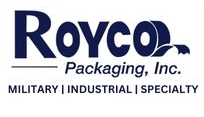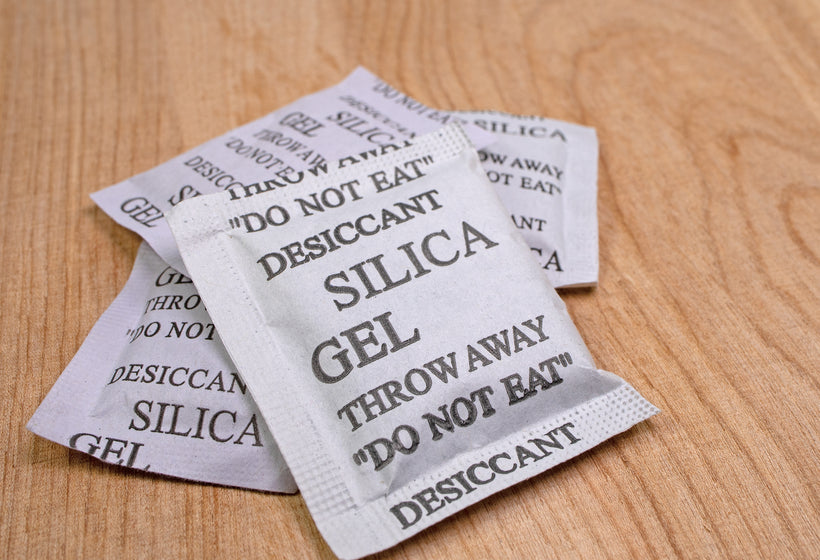In the expansive realm of packaging solutions, gel desiccants have emerged as a pivotal player, especially when it comes to ensuring that products remain in their prime condition. These seemingly small packets pack a punch, offering immense value not just for businesses but also for end consumers. Let's dive into how gel desiccants have revolutionized packaging, and why they might just be the secret ingredient you've been searching for.
Understanding Gel Desiccants
Gel desiccants, commonly recognized as those small packets you often find in product boxes, primarily consist of silica gel. They're designed to absorb moisture, ensuring that the internal environment of a package remains dry. This is essential for many products, from electronics to clothing, where even a slight increase in humidity can degrade quality.
Why Silica Gel Desiccants?
The reason many companies opt for silica gel desiccants over other moisture-absorbing materials lies in its efficacy. Silica gel has microscopic pores that readily attract and trap moisture. Additionally, it's non-toxic, which makes it safe for use in a wide range of products. As a result, it offers superior protection against potential humidity-induced damage.
The Versatility of Silica Gel Desiccants Packets
One of the standout features of silica gel desiccants packets is their versatility. Regardless of the product type – be it food, electronics, apparel, or pharmaceuticals – these packets can be seamlessly integrated into the packaging. Their compact size means they don’t take up much space, yet they effectively maintain the internal environment of the package.
Benefits for End Consumers
For end consumers, the presence of gel desiccants in product packaging means a few things. Firstly, it signifies that the company cares about the product's quality even after it leaves their hands. Secondly, it ensures that the product remains in its intended condition, free from potential moisture-induced damage or degradation. Finally, for products with longer shelf lives, it offers a sense of assurance that the product will remain preserved for an extended period.
The Environmental Angle
Another aspect worth highlighting is the environmental benefit. Damaged products often lead to returns or disposals, both of which have environmental implications. By using gel desiccants, businesses can reduce the likelihood of products getting damaged, which in turn reduces waste, returns, and the overall environmental impact.
Challenges and Considerations
Like all solutions, gel desiccants come with their own set of challenges. It's essential for businesses to ensure that these packets are securely placed within the packaging so that they don't come into direct contact with the product, especially if it's consumable. Consumers, too, should be educated about the purpose of these packets and the importance of not opening or consuming them.
Future of Gel Desiccants in Packaging
As the focus on product quality and sustainability continues to grow, it's likely that the role of gel desiccants in packaging will further expand. Innovations in the space are already underway, with companies looking at reusable desiccants and more sustainable materials. The future, it seems, is bright for these humble moisture-absorbing packets.
Delving Deeper: How Gel Desiccants Work
To truly appreciate the value of gel desiccants in packaging, it's helpful to understand their mechanism. Each tiny bead inside these packets acts like a sponge, but on a microscopic level. When the surrounding environment has excess moisture, these beads draw in the water vapor, trapping it inside their porous structure. This process is called adsorption. As a result, the surrounding environment—whether it's a shoebox, a packet of jerky, or a box containing sensitive electronics—stays dry and moisture-free.
Comparing Gel Desiccants with Alternatives
While gel desiccants, particularly those made of silica gel, are popular, they aren't the only desiccants available. Other materials like clay, calcium oxide, and molecular sieves are also used for similar purposes. So, what makes gel desiccants stand out?
Firstly, silica gel desiccants can absorb up to 40% of their weight in moisture, making them incredibly efficient. They also work across a wide range of temperatures, maintaining their efficacy whether they're in a freezing warehouse or a hot shipping container. Additionally, they're chemically inert, meaning they won't react with the products they're protecting.
Applications Beyond Packaging
While our primary focus is packaging, it's worth noting the broader applications of gel desiccants. Museums use them to protect historic artifacts and documents. Homeowners use them to prevent mold and mildew growth in damp corners of their homes. Travelers use them to protect cameras and other sensitive gear from humid climates. The versatility of gel desiccants extends far beyond the packaging industry, showcasing their widespread utility.
Gel Desiccants and the Push for Sustainability
In today's eco-conscious world, there's a valid concern about single-use items, and gel desiccants aren't exempt from this scrutiny. The good news is that many gel desiccants can be reused. By heating the silica gel beads, the trapped moisture evaporates, resetting the desiccants for another cycle of moisture absorption.
Several companies are also researching biodegradable or compostable materials that can serve as alternatives to the traditional packets. These initiatives align with a broader push towards sustainable packaging solutions without compromising on product protection.
Consumer Education: A Vital Component
One of the challenges with gel desiccants, especially given their prevalence in packaging, is ensuring that consumers understand their purpose. Every year, there are instances of people mistakenly consuming or mishandling these packets. While silica gel is non-toxic, it's not meant for ingestion. As such, businesses have a responsibility to clearly label these packets, advising consumers of their purpose and cautioning against ingestion or misuse.
Innovations on the Horizon
The world of gel desiccants is not static. Researchers are continuously exploring ways to enhance their moisture-absorbing capacities, reduce costs, and improve their environmental footprint. Innovations, such as color-changing desiccants that indicate saturation levels, are becoming more commonplace, offering both businesses and consumers enhanced utility and convenience.
Their Role in Modern Packaging
Gel desiccants play an indispensable role in modern packaging. Their ability to maintain the integrity of products by warding off moisture-induced damage makes them a crucial inclusion in the packaging process. As a business or a consumer, understanding their value and ensuring their presence in product packaging can make a notable difference in product quality and longevity.

